WORLD TRAVEL NEWS ARTICLE
UNITED KINGDOM
THE ROYAL BOTANICAL GARDENS AT KEW

Like many great cities, London is blessed with oases of green in the form of parks and gardens open to the public. One of the loveliest is the Royal Botanic Gardens, Kew, a UNESCO World Heritage Site by the banks of the river Thames in Richmond.
The famous poem says “Go down to Kew in lilac time!” and the lilacs are indeed a mass of colour and scent in early May. But there’s plenty to see in Britain’s premier botanical garden at any time of year, with glasshouses aplenty if you want to stay under cover, and many hidden gems to take in as the seasons pass by.

An Autumnal view of The Palm House
Probably the most famous of the seven glasshouses at Kew is the iconic Palm House, housing fascinating plants including bananas and cocoa bushes, as well as the world's oldest potted plant, Encephalartos altensteinii, a cycad brought to Kew in 1775. Nearby the modern Princess of Wales Conservatory houses ten different climate zones and many different collections including a rainforest section, the orchids, cacti and carnivorous plants and the extraordinary flora of Madagascar.
In the Temperate House subtropical plants from every continent are grown in the world's largest surviving Victorian glasshouse, while the Waterlily House is Kew's smallest conservatory, home to lotuses and tropical waterlilies including the giant Victoria cruziana with lily pads up to a yard wide.
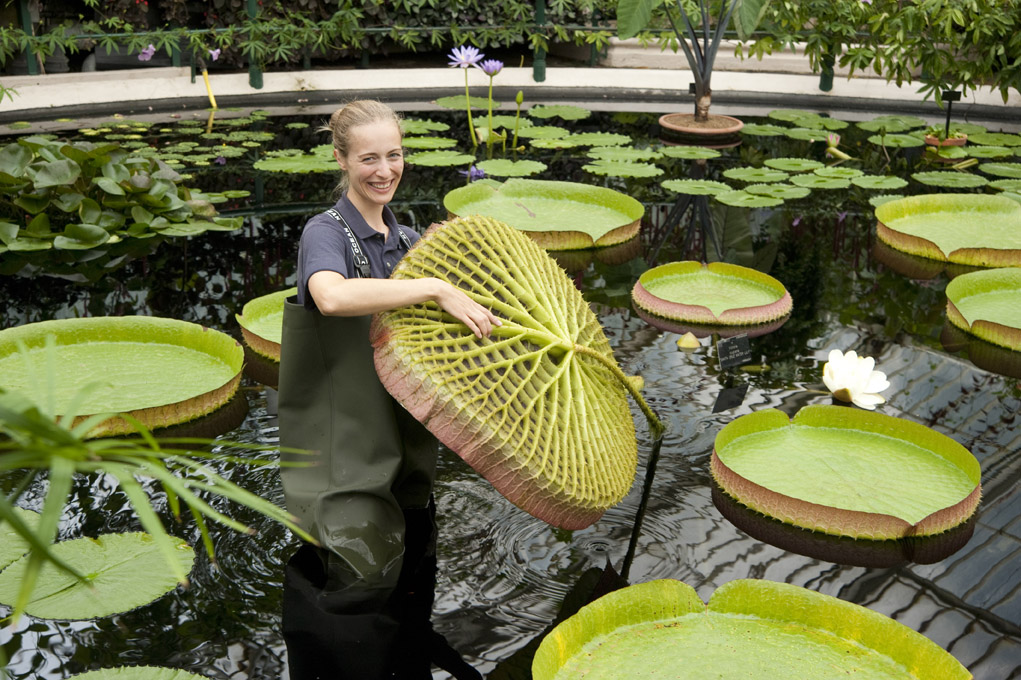
For two hidden treasures, don’t forget to check out the tiny Bonsai House and nearby Davies Alpine House. The changing displays here showcase whatever is looking at its best from Kew’s fine behind-the-scenes collections of traditional bonsai and delicate alpine plants from all over the world.
If you enjoy getting high up and looking out on views in all directions, the top of the Xstrata Treetop Walkway can't be beaten, especially in autumn for a splendid panorama of the fall colours across the adjacent areas of the Gardens. The tree collection numbers around 14,000 specimens, including trees from all over the world, so the autumn foliage at Kew is second-to-none.
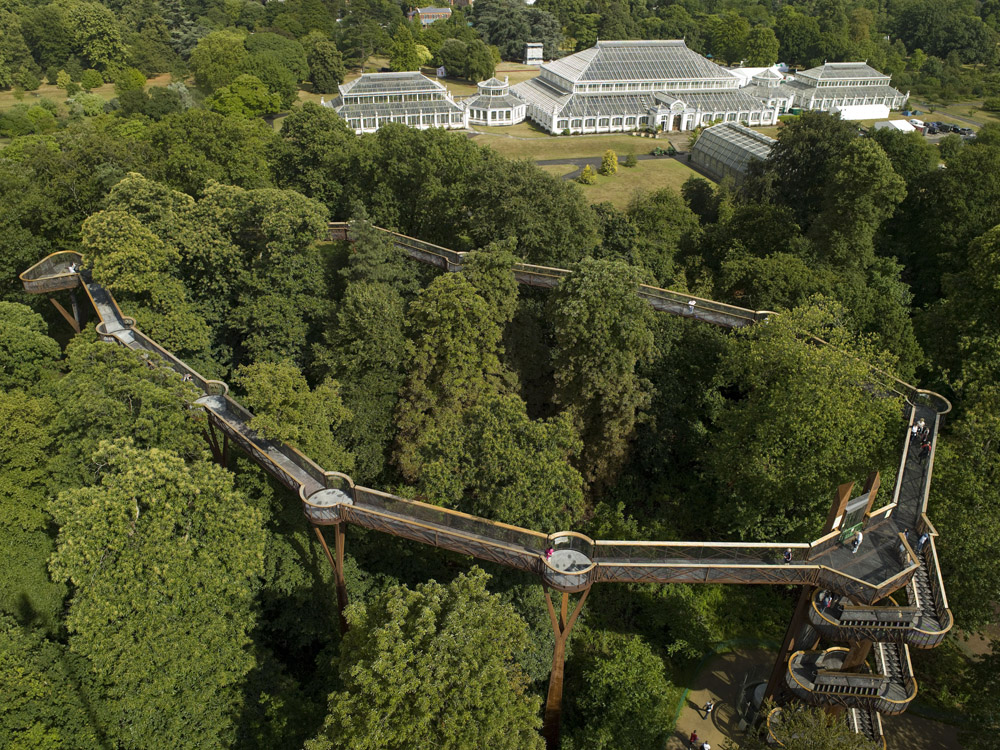
For another spot up high, the Temple of Aeolus is a lovely little circular folly on the mound near the Palm House Pond. In spring the slopes below the Temple are covered with snowdrops, followed later by hundreds of wild daffodils in one of Kew’s many mass plantings of spring bulbs. Throughout March and April Kew is filled with sweeping drifts of crocuses, daffodils and Chionodoxa, followed by London’s finest bluebells in early May!
The Mediterranean Garden is beautiful all through the summer and autumn. Scarlet geraniums and yellow Spanish broom evoke the colours of the south, and on a hot day the perfumes of cistus, rosemary and lavender fill the air beneath the olive trees and cypresses.
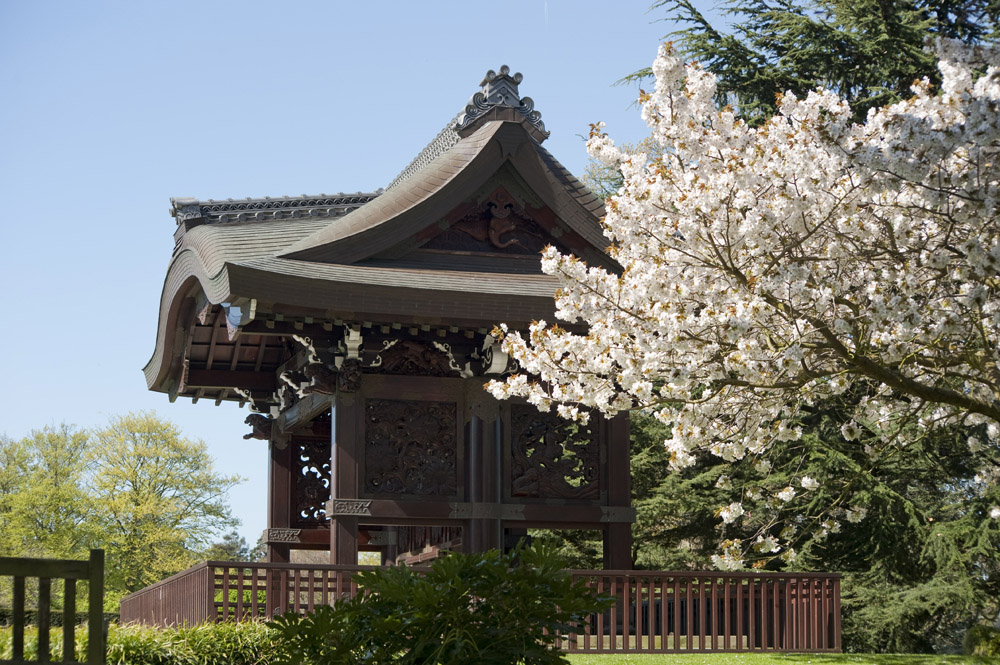
For a really serene spot, in the south of the Gardens in the shadow of the famous Pagoda is a classic Japanese garden with Harmony, Peace and Activity areas, including a raked gravel meditation garden with mossy stone lanterns, and a sacred hinoki tree. The traditional cherry trees and azaleas here are covered with flowers in spring, while elegant Japanese maples bring flaming colour in the autumn.
For another of Kew’s hidden gems, look just to the west of the Princess of Wales Conservatory, where a circular seat is completely enclosed inside an arbour of ancient wisteria. In early to mid May, when the wisterias bloom, sitting here feels like being inside a giant scented bouquet. It’s wonderfully secluded year-round; picnic spots don’t get much more idyllic than this...

Some of the inhabitants of the Princess of Wales Conservatory
Close by is the Grass Garden – far more exciting than the name suggests! This small formal garden is a feast of colour and texture, packed with dozens of decorative grasses. The shimmering of delicate seed heads in oblique afternoon light is a delight for photographers.

Like many attractions, Kew offers a discounted entrance rate for groups of ten or more; a handy 15% off if you book in advance. So why not take advantage of this to plan a memorable family get-together or a day out with friends?
For lot's more information about the Gardens, special events etc. pleasse visit www.kew.org
GETTING THERE
London has 6 airports into which you can fly from almost every country in the world.
London Heathrow
London Gatwick
London Stansted
London City
London Luton
London Southend
Once in London, getting to Kew Gardens is quite simple. They are 10 miles from central London and adjacent to the river Thames.
Getting to Kew Gardens By London Underground
Kew Gardens Station (District Line (Richmond branch), London Overground) is the closest London Underground station, and is in zone 3.
From Kew Gardens Station it is a 5 minute walk to Kew Gardens (Victoria Gate entrance). Exit the station past the parade of shops, cross Sandycombe Road and walk down Lichfield road (opposite) to reach Victoria Gate.
Please always check the Transport for London website for service disruptions before making your journey by visiting www.tfl.gov.uk.
Getting to Kew Gardens By public transport
To find out the best route to Kew by public transport, use the Transport for London Journey Planner at www.tfl.gov.uk
Getting to Kew Gardens By train
Train services (South West Trains) from Waterloo, via Vauxhall and Clapham Junction, stop at Kew Bridge station. From Kew Bridge station it is a 10-minute walk to Kew Gardens (Elizabeth Gate entrance). For more information call +44 (0)8457 484950 or visit the National Rail Journey Planner at www.nationalrail.co.uk
Getting to Kew By bus
Route 65 stops close to the entrance gates. Route 391 stops near Kew Gardens Station. Routes 237 and 267 stop at Kew Bridge station.
Getting to Kew By car or coach
Kew Gardens is located at Kew, Richmond, Surrey, TW9 3AB, and is well signposted from all the major local roads. The South Circular (A205) passes the north-east corner of Kew Gardens and Kew Road (A307) forms the eastern border.
Please note that Kew has no coach park, however coach parking is free on Kew Road (A307) after 10am. Groups are advised to arrive at either Victoria Gate or Elizabeth Gate, but note that only Elizabeth Gate has a designated coach drop off point. See our groups pages for more information.
Editor's Comment
No matter how you get there, make sure your visit to London includes these magnificent gardens. I was lucky enough to be a guest there recently and the Fall Colours are breathtaking, the standard of catering was surprisingly high and, as an added bonus, there is a bijou Royal Palace to visit within the grounds.
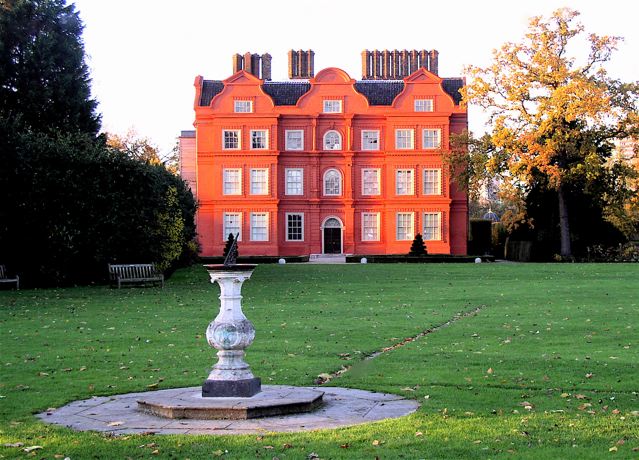
Kew Palace
For more details please visit www.hrp.org.uk/KewPalace
You may also like to read
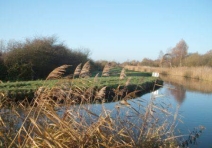
UNITED KINGDOM - WICKEN FEN
Sue Dobson introduces Tour-smart readers to one of East Anglia's nature reserves, Wicken Fen.

UNITED KINGDOM - WALKS & RIVERS OF DARTMOOR
Isabelle Tabb put her best foot forward for Tour-smart and explores Dartmoor.

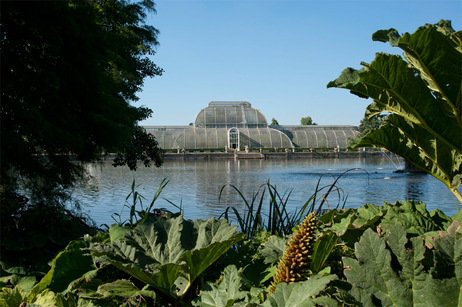
Comments